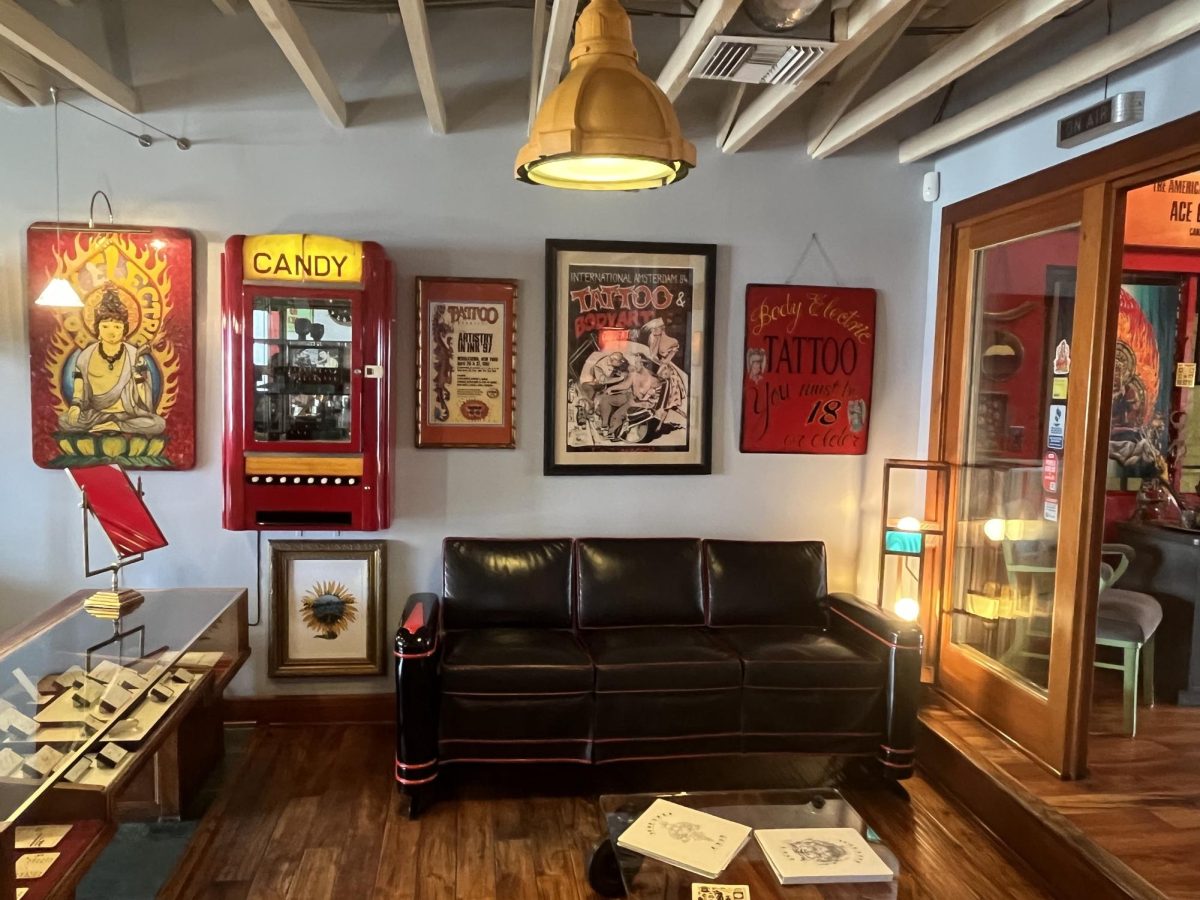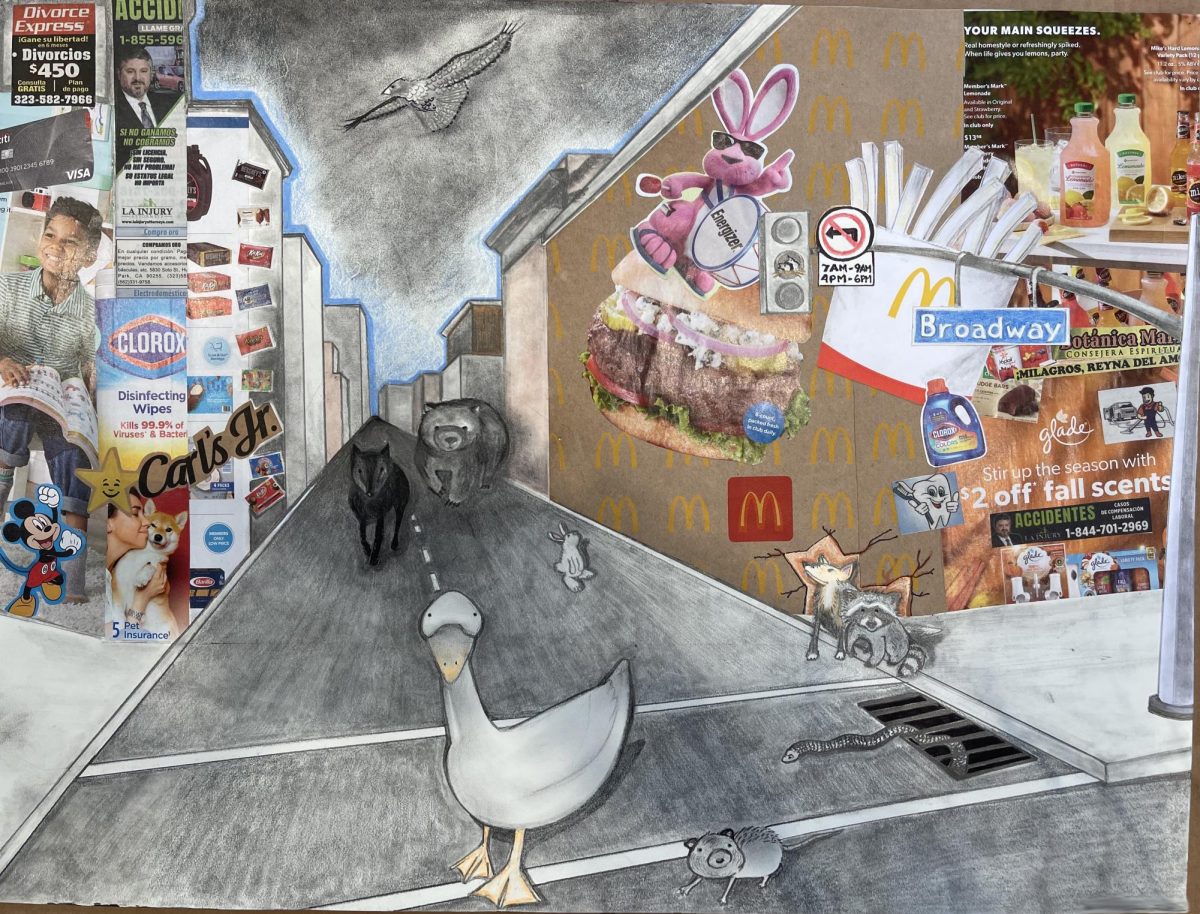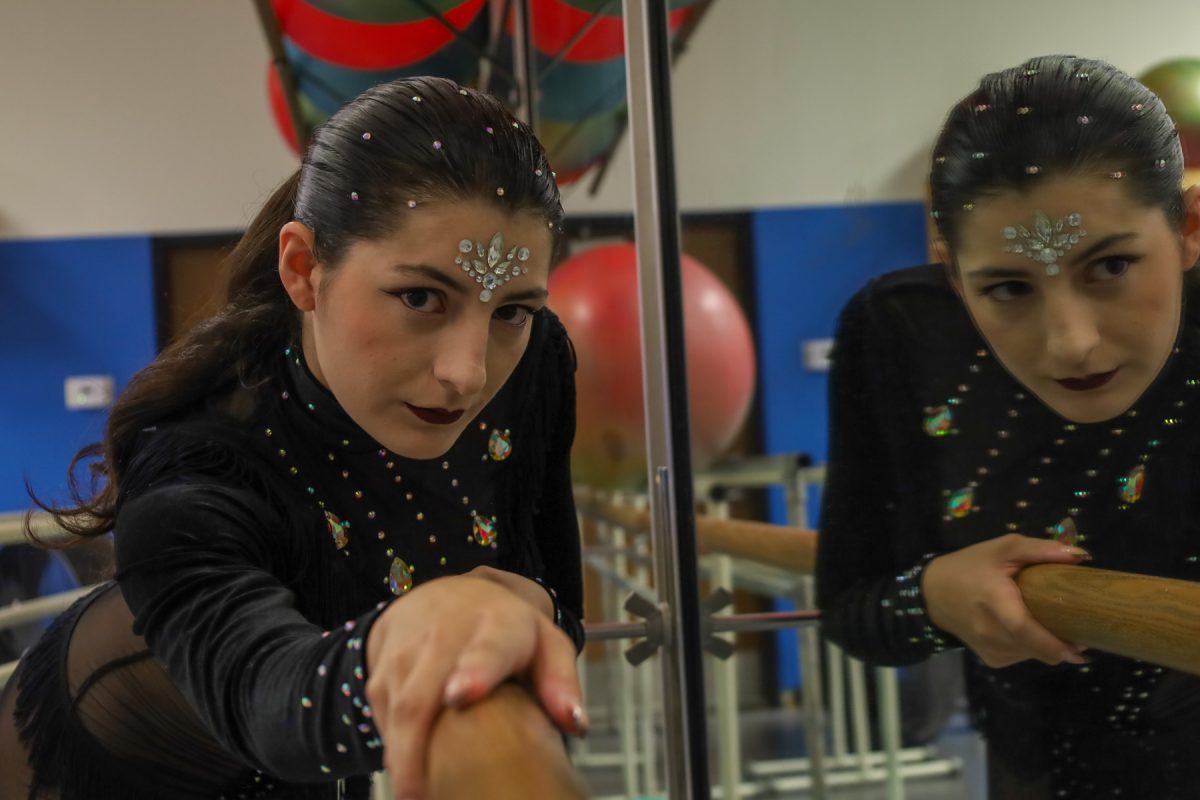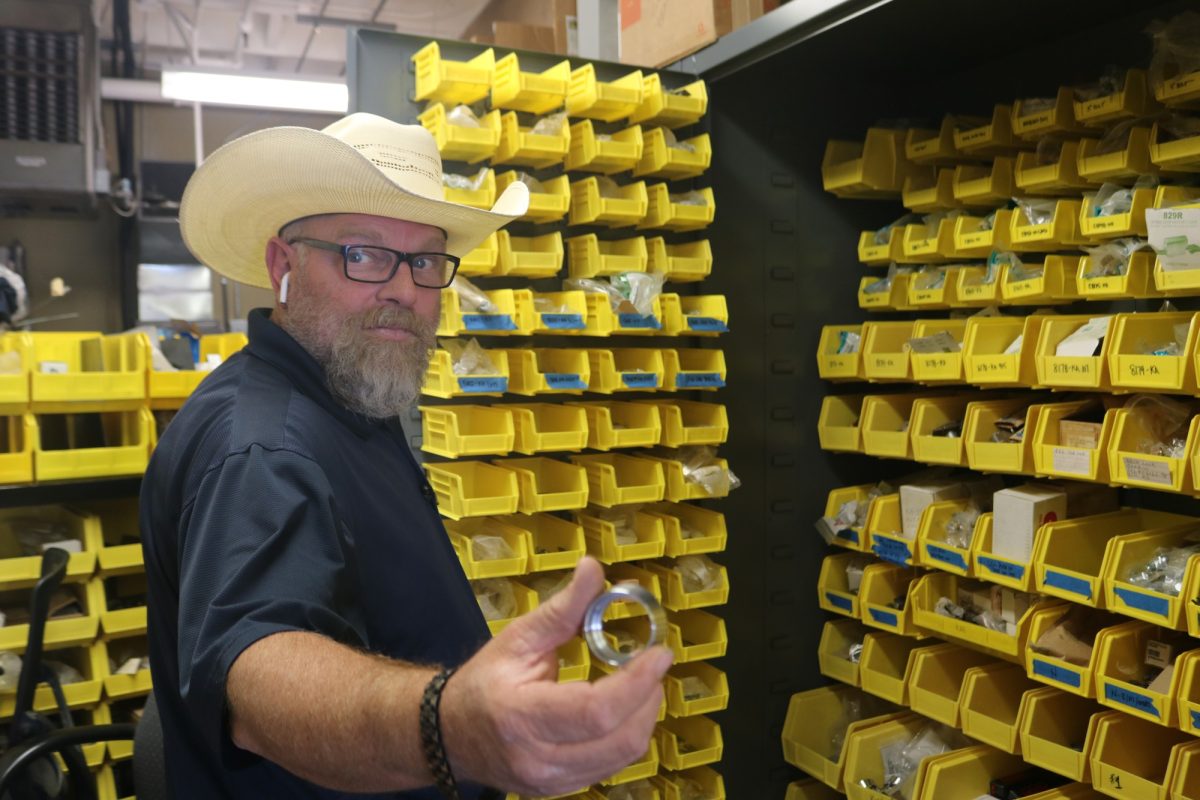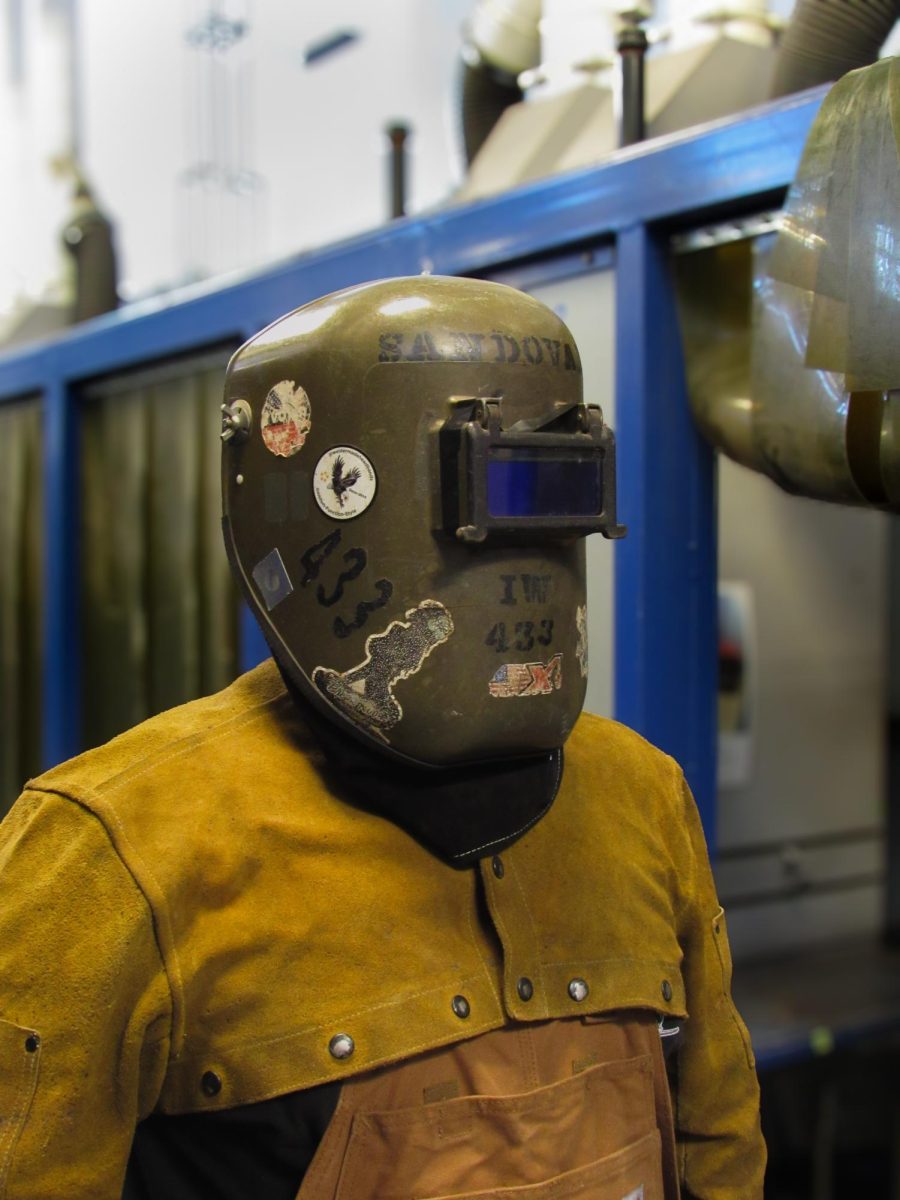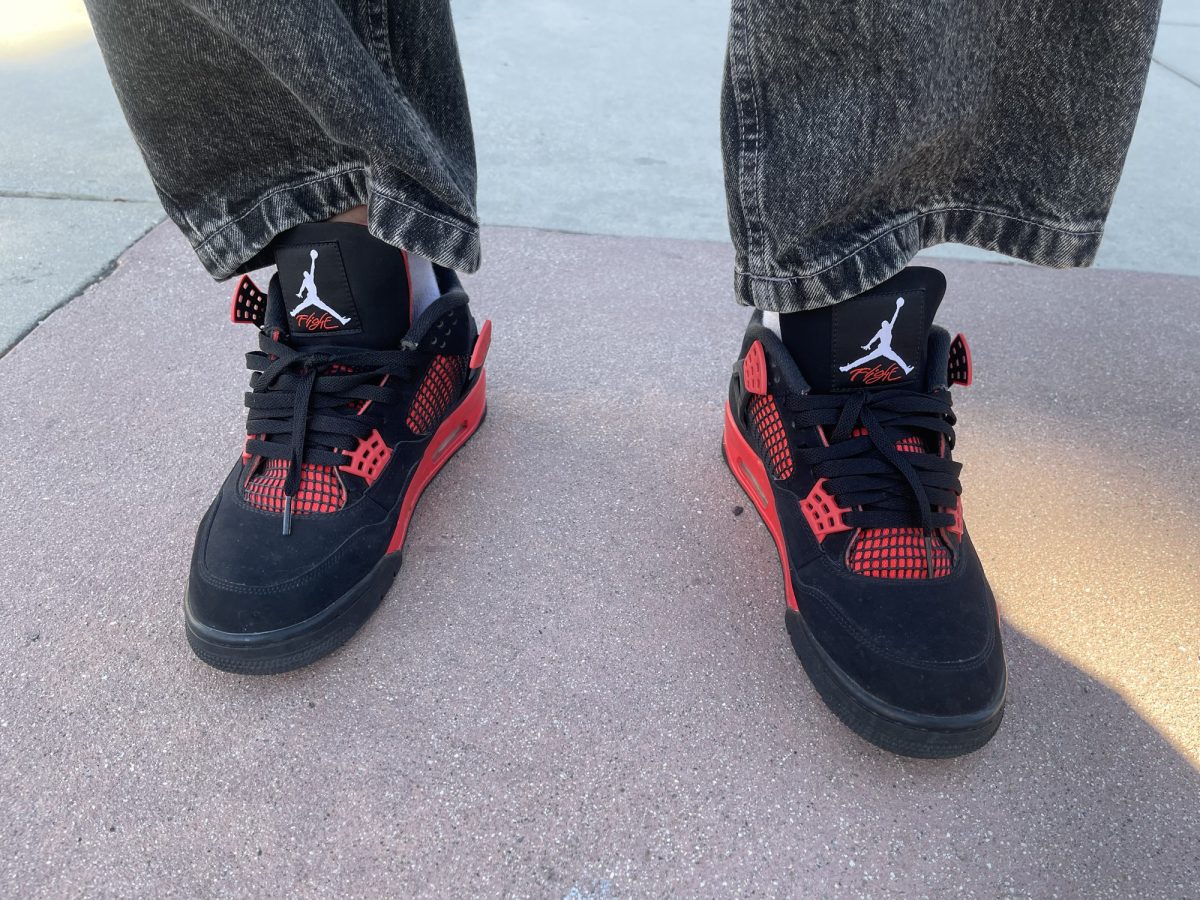Alex Fleming, 34, is dressed in a monochromatic gray polo and pants, accessorized with an assortment of beaded bracelets and dark lens aviator sunglasses he’s rarely seen without.
Aside from his sunglasses, one thing he won’t part with is his Segway.
The engineering technology major at El Camino College has built a unique connection with a 30-pound piece of transportation which he uses to commute to school and work.
Fleming lives in Redondo Beach, which is about 12 miles from El Camino and about 20 miles from Sofi Stadium, where he works as a lead security guard. He splits up his travels between the public bus and the Segway to preserve as much battery life as possible in the self-balancing scooter.
The Segway has been assigned the name “Tail Feather.” Tail is a Segway miniPro ninebot that was made by a company called Segway Los Angeles. It is a self-balancing electric scooter Fleming purchased from a retail location in Culver City that is known as a Segway dealership.
“He’s more of a pet, not a person. He’s a pet because he doesn’t talk,” Fleming said endearingly about his scooter.
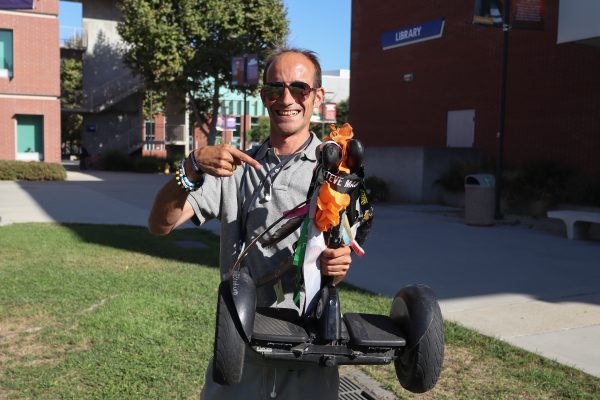
Fleming has built a unique relationship with his trusty Tail after two years of ownership. Having to rely on Tail as one out of two sources of transportation, Fleming now views Tail as a friend.
When the 30-pound Segway is not being ridden, it is easy to transport onto buses and left in tents that are meant for staff at the Sofi Stadium events while Fleming is working security. In between work and school, Tail not only gets Fleming to wherever he needs to be but the Segway miniPro also assists Fleming in building connections with other people.
Because the ninebot is decorated with many knick knacks, it causes people to take notice. This leads to questions or people intrigued enough to want to ride it themselves.
It is a personal transporter that can travel up to 14 miles on a full charge, which takes about an hour and a half to complete. It can also reach speeds up to 10 mph on average. This type of scooter retails between $519 and $719 at Segway Los Angeles and Walmart.
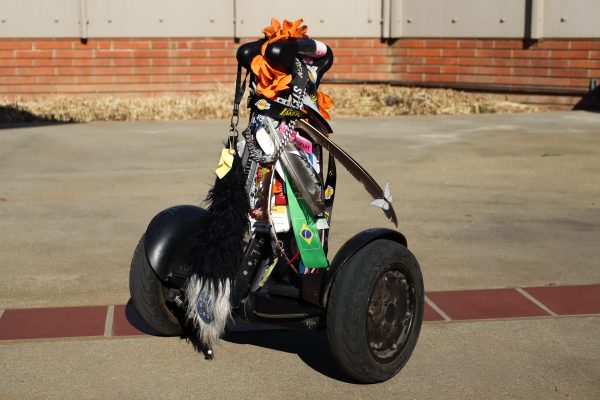
According to pitchbook.com, the company Segway has seen an increase in sales. As of September 30, the company has been trailing a 12-month revenue of $1.89 billion.
After purchasing Tail, it took Fleming about two to three minutes to learn to ride the scooter. Tail is treated with care as if it were a pet, something with feelings. Fleming referred to Tail as his “noble steed,” which is a reference to the “Shrek” movie franchise.
Though Fleming used to have a 1984 Mazda pickup truck he shared with his family, he finds it much easier to get around using Tail and public transportation.
The Segway, which is decorated in several mementos, is named after the black and white furry tail hanging off the back of the self-balancing scooter. There is also a feather draped over to the side of the Segway.
There are several other souvenirs that Fleming obtained through his job at the SoFi Stadium.
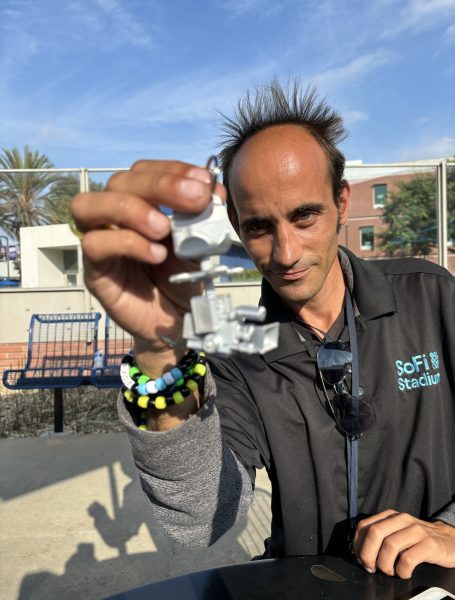
“Tail’s going to love this,” Fleming said. While riding Tail, Fleming bent down to scoop up two white plastic strips with the word “Clippers,” referencing the Los Angeles-based NBA team, written in bold black font. He spotted them while on the corner of Prairie Boulevard and Century Boulevard in Inglewood.
Jacob Wasserman, 31, a research program manager at UCLA’s Institute of Transportation Studies, explains that these micro mobility devices are often used for first and last mile trips. They are used as a means to connect to and from transit so individuals would ride these devices to trains and buses.
Wasserman said even though these micro mobility devices are better for the planet, they can also become an issue.
“If you look at it narrowly, each trip on a human-powered bike is definitely going to be greener and even an electric bike or Segway is going to be far greener than a trip in a car, even a carpool probably…you’re burning fossil fuels as opposed to the relatively clean energy that powers these electric vehicles in California,” Wasserman said.
Life cycle cost is another issue with micro mobility devices. These scooters are built cheaply, stolen or discarded quickly and need to be rebuilt with rare minerals that go into their batteries and plastics. If individuals had to buy a car as often as they had to replace these scooters, it could cut down on the environmental benefits.
Wasserman said the uptake of these modes of transportation depends on safety and the infrastructure on the street. Issues include having safe bike lanes, bike paths and intersections that people can travel in on a bike or a Segway. There’s also the risk of being hit in a collision, sped past by cars or falling due to rough pavement.
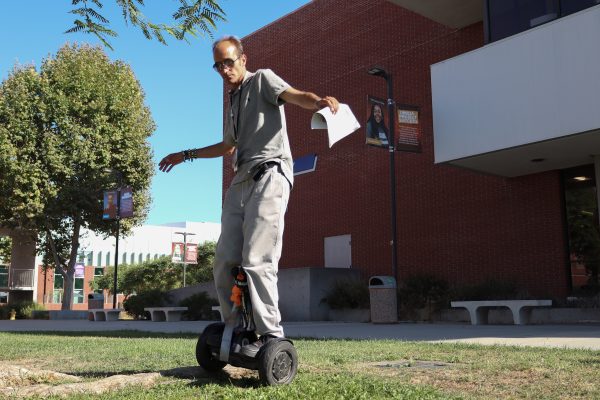
In order to stay safe when riding Tail, Fleming usually rides the ninebot on sidewalks but will also use bike paths when necessary.
He said sometimes police don’t know what Tail is and are confused if Fleming should be riding Tail on the sidewalk or the bike lane. Among the many electric scooter laws in California, there is one in place that forbids the riding of electric scooters on sidewalks.
Fleming attends classes at El Camino College Monday through Thursday and works Friday through Sunday. He is sometimes assigned jobs at other stadiums or arenas, including the Rose Bowl in Pasadena and the Hollywood Bowl, usually working sports events as well as concerts where he enforces the rules.
Fleming feels both commutes are about the same, even though they are different distances. He finds his morning commute is a lot easier than any other time of day.
Fleming loves his place of work and is always excited to attend. He knows many facts about the stadium, from architectural designs to the price it cost to build. He even speaks to the stadium, saying goodbye whenever he leaves the property.

Though he adores his place of work, he shows true appreciation for his Segway, Tail.
“It’s reliable. I can take it with me to the stadium and I can take it with me on the bus,” Fleming said.
Fleming appreciates the convenience of the scooter. The difficulty of the mechanics of a bike and simply not wanting to be sweaty after riding and not being able to stand the embarrassment of one is what kept Fleming away from choosing a bike for transportation.
“I was just looking up Segways, seeing what they had. Because, you know, during the hoverboard craze, people were riding hoverboards and I always wanted something like that,” Fleming said.
Grace Huntington is a 21-year-old Japanese major at El Camino College and a close friend of Fleming’s.
“I felt an instant connection,” Huntington said. She was enthralled the first time she met Fleming and Tail. It took her about 10 times to learn to ride Tail confidently.
Huntington approached him because she was curious about Tail. She joked that Fleming had invented the Segway. She rode Tail the second time meeting Fleming and multiple times after.
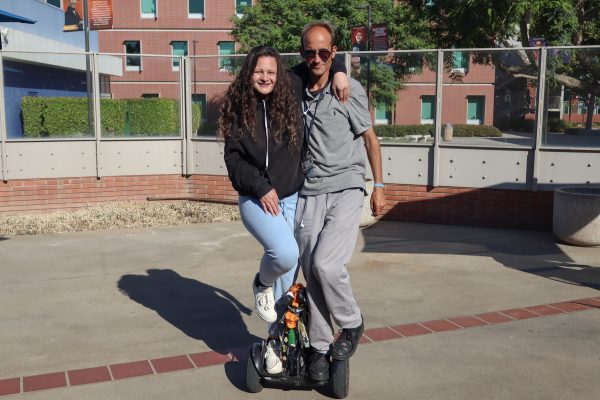
Fleming and Huntington have spent a lot of time together with Tail. Huntington has now gained her own level of respect and appreciation for the Segway. She even keeps an eye on Tail as it charges, to ensure nothing goes wrong.
Huntington said she and Fleming have the same sense of humor and that they understand each other. Tail is just the piece to the puzzle that brought their friendship together.
After learning how to ride Tail individually, they both wanted to try something different, which led them to trying what they refer to as “tandem style.”
Tandem style is a reference to a Tandem bike, which is a bicycle that requires two riders because it has two seats, two sets of pedals and two handle bars for the front and back rider.
During one of their hangouts, Fleming and Huntington tried to ride Tail at the same time. In their many attempts, they had some success, with one leg from Fleming and one from Huntington on either side of Tail, their other legs left dangling freely.
“Usually it’s for a single person,” Huntington said.
She said she isn’t afraid of trying new things, which gave her the confidence to try this new form of riding. She still practices riding Tail whenever she gets the chance.
Fleming goes the extra mile to care for Tail, from the decorations and making him personalized to repairing Tail when something goes wrong.
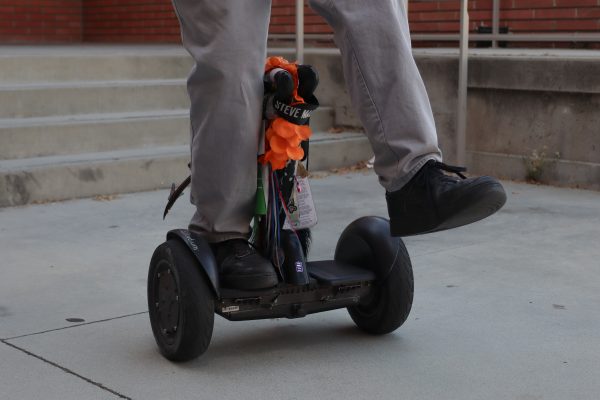
Fleming said Tail is made up of only a few parts and the most important part being the motherboard.
“Tail’s motherboard got messed up,” Fleming said.
He said the scooter was involved in a hit-and-run outside El Camino. He declined to add more.
Tail’s motherboard needed to be replaced. With no other choice, Tail’s motherboard was replaced and even got an upgrade. It would now go 15 mph instead of the usual 10 mph that is programmed into a normal ninebot, which seemed to be a silver-lining for Tail. Fleming purchased the necessary equipment and parts from an online store called More4Motion.
Even though Tail has been fixed internally, the Segway still has some external evidence that it may have been in an accident. This seems to add to the character of Tail, like another souvenir to add to its life story.
Fleming has used Tail to travel a total of 4,823 miles. Fleming commends Tail for his traveling journey and said Tail is still going strong.
“Because prices change now, I purchased it when it was brand new,” Fleming said. “He is priceless.”





